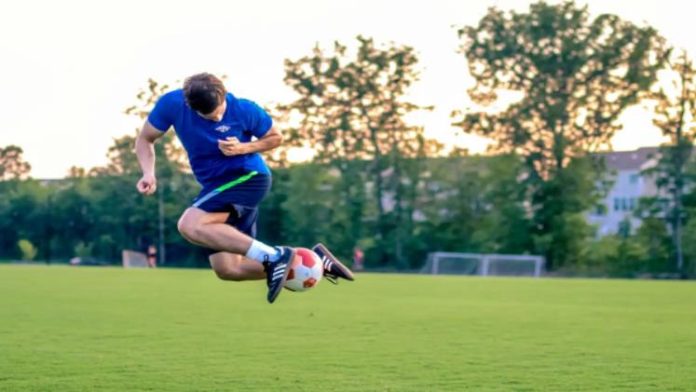The Strength & Conditioning (S&C) coach is a cornerstone of modern football, meticulously sculpting athletes’ bodies for the extreme physical demands of the game. This article, “The Role of the Strength & Conditioning Coach,” explores how these specialized professionals design and implement tailored training programs to enhance power, speed, endurance, and injury resilience in footballers. From explosive power drills and targeted strength training to metabolic conditioning and recovery protocols, understanding their scientific approach reveals an indispensable element in maximizing athletic potential and extending careers. To delve into the physical science behind elite football performance, ufabet168 คืนยอดเสีย is your convenient tool.
More Than Gym Work: Athletic Architects
An S&C coach’s role is far more than just gym work; they are athletic architects, meticulously building and refining a player’s physical capabilities to meet the specific demands of their position and the high-intensity nature of the game. They blend biomechanics, physiology, and sport science to forge resilient, powerful, and enduring athletes.
The Role of the Strength & Conditioning Coach: Peak Physique
“The Role of the Strength & Conditioning Coach” highlights how these specialized professionals design and implement tailored training programs to enhance power, speed, endurance, and injury resilience in footballers:
- Enhancing Athletic Attributes:
- Power and Explosiveness: Developing explosive power through exercises like plyometrics (jumps, bounds) and Olympic lifts, crucial for sprinting, jumping for headers, and powerful shots (linking to “The Athlete Machine”).
- Speed and Agility: Designing drills to improve acceleration, deceleration, change of direction, and reaction time, vital for quick movements on the pitch.
- Endurance and Stamina: Implementing high-intensity interval training (HIIT) and various conditioning drills to build aerobic and anaerobic capacity, allowing players to maintain intensity throughout 90 minutes (linking to “The Pre-Match Warm-Up”).
- Strength: Building overall body strength to improve robustness, protect joints, and enhance physical duels (linking to “The Centre-Back’s Art” for physical dominance).
- Injury Prevention and Rehabilitation Support:
- Targeted Weakness Correction: Identifying individual player weaknesses or muscle imbalances through assessment and designing corrective exercises to reduce injury risk (linking to “Cơn Ác Mộng Chấn Thương”).
- Load Management: Working closely with the coaching staff (linking to “The Player-Manager Relationship”) and medical team (linking to “The Medical Team’s Vital Role”) to manage training loads, preventing overtraining and overuse injuries.
- Post-Injury Strength: Collaborating with physiotherapists (linking to “The Role of Physiotherapists”) to re-build strength and power in recovering areas, ensuring a safe and effective return to play.
- Movement Efficiency: Improving players’ movement mechanics to reduce stress on joints and enhance overall efficiency, contributing to longevity (linking to “The Player’s Lifestyle”).
- Periodization and Customization:
- Seasonal Planning (Periodization): Structuring training across the season (pre-season, in-season, off-season) to ensure players peak at critical times and avoid burnout. Pre-season tours (linking to “The Pre-Season Tour”) are key for initial fitness building.
- Individualized Programs: Tailoring programs based on a player’s position (e.g., a defender’s needs versus a winger’s), age, injury history, and individual physiological responses.
- Testing and Monitoring: Regularly testing players (e.g., sprint times, jump height, endurance tests) and using wearable technology (linking to “The Role of the Data Analyst”) to monitor progress and adapt training.
- Integration with Football-Specific Training:
- On-Pitch Conditioning: Designing drills that integrate physical conditioning with football skills, ensuring players develop athleticism in a sport-specific context.
- Recovery Strategies: Implementing active recovery sessions, advising on nutrition (linking to “The Player’s Diet”), hydration, and sleep to optimize post-training and post-match recovery.
- Psychological Impact: Instilling discipline, mental toughness (linking to “The Player’s Confidence”), and a professional attitude towards physical preparation.
Conclusion
The Strength & Conditioning coach is an indispensable force in modern football, fundamentally reshaping players’ physical capabilities. Their scientific approach, centered on designing and implementing tailored training programs to enhance power, speed, endurance, and injury resilience, is crucial for unlocking peak athletic potential. By meticulously preparing players for the relentless physical demands of the game and fostering a culture of physical excellence, S&C coaches play a vital role in both individual success and collective team performance, truly proving themselves as the architects of the modern footballer’s physique.
